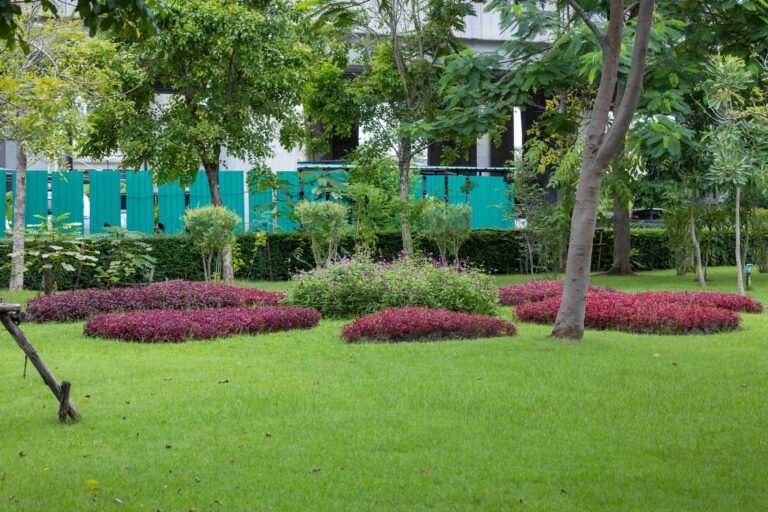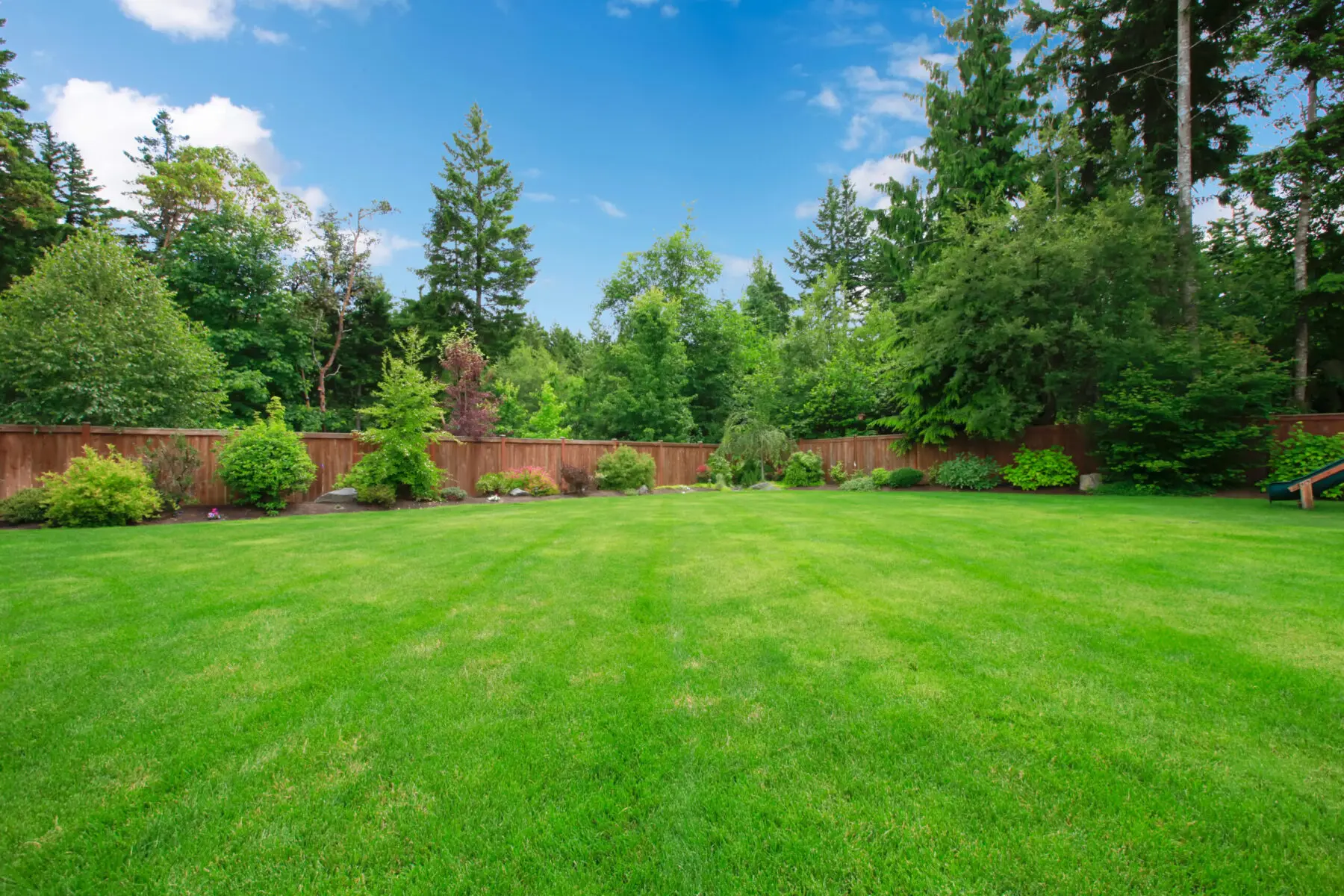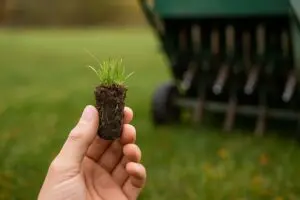As autumn settles in and temperatures begin to drop, homeowners in New City start preparing their lawns for the cooler months. For those who value a beautifully maintained home and understand the importance of a well-kept lawn, scheduling aeration and overseeding in the fall is one of the best investments you can make for a healthy, vibrant lawn next year. While this may seem like just another seasonal chore, the timing of these services is crucial for getting the best results. Fall offers ideal conditions to promote robust grass growth, improve soil health, and set the foundation for a fuller, greener lawn come spring. In this blog, we’ll explore why aeration and overseeding in the fall are essential for achieving a thriving lawn and how this process benefits your lawn’s long-term health.

Understanding Aeration and Overseeding
Before we delve into the timing, let’s first explain what aeration and overseeding are, and why they are indispensable for maintaining a healthy lawn:
- Aeration involves creating small holes in the soil by removing plugs of turf. This process alleviates soil compaction, allowing air, water, and nutrients to reach the grassroots. Over time, foot traffic and other factors can cause the soil to become compacted, preventing essential nutrients from reaching your grass roots. Aeration creates pathways for these elements to penetrate deeper into the soil, promoting a healthier, more resilient lawn.
- Overseeding is the process of spreading grass seed over your existing lawn. This helps fill in bare spots, improves lawn density, and introduces new, more resilient grass varieties. When paired with aeration, overseeding ensures that the seed has better contact with the soil, increasing the chances of successful germination. Together, aeration and overseeding reduce thatch, enhance nutrient uptake, improve water retention, and help your lawn withstand seasonal challenges.
Why Fall is the Best Time for Aeration & Overseeding
Fall is the optimal season for aeration and overseeding for several important reasons, especially for homeowners in New City who prioritize a lush, healthy lawn and time-efficient care:
- Cooler Temperatures:
Unlike the harsh summer heat, the cooler fall weather creates the perfect environment for grass to grow. Mild temperatures ensure that seeds can germinate and roots can establish themselves without the risk of heat stress, which can damage your lawn. With autumn’s moderate climate, your grass has the best chance of growing strong and healthy.
- Increased Moisture:
Fall typically brings more rainfall, and cooler temperatures reduce evaporation. This combination helps keep the soil moist, which is critical for seed germination. For homeowners who have busy schedules and may not have the time to water frequently, nature provides a helping hand with consistent moisture, ensuring better seed success.
- Reduced Weed Competition:
During the cooler months, weeds grow more slowly, giving your newly seeded grass the time it needs to take root and thrive. With fewer weeds competing for nutrients, your lawn can establish stronger, healthier growth before the next season. Unlike the summer heat—when weeds tend to take over—fall’s milder conditions give your grass the upper hand.
Fall is also the ideal time for aeration and seeding because crabgrass has gone dormant. Aerating too early—while crabgrass is still active—can actually spread its roots and make the problem worse. By waiting until fall, you create the best environment for new grass to grow without competition from weeds or invasive species.
- Favorable Growth Conditions:
Grass grows more efficiently in the fall due to optimal temperatures, moisture, and the establishment of a strong root system. Fall gives your grass the head start it needs to take root, giving you a vibrant lawn before the spring season begins.
The Impact of Aeration and Overseeding on Soil Health
While each service is beneficial individually, when combined, aeration and overseeding provide exceptional results for soil health and lawn quality:
- Aeration improves soil structure by relieving compaction caused by foot traffic, machinery, or even mowing. This process ensures that vital nutrients, water, and air reach the grassroots, promoting better growth and enhancing your lawn’s resilience to stressors.
- Aeration also helps break down thatch, a layer of organic matter like grass clippings and roots that can suffocate your lawn. A thick layer of thatch prevents essential resources from reaching the soil, but aeration helps break it down and encourages decomposition, providing the necessary conditions for healthy grass to thrive.
- Overseeding works synergistically with aeration, helping fill in any thin or bare patches of grass. As new seed benefits from the improved soil structure aeration provides, the seed makes better contact with the soil, ensuring a higher success rate in germination and helping your grass grow stronger and healthier. Together, these two services contribute to healthier, denser grass that’s resilient against disease, pests, and environmental stress.
The Timing Matters: How Fall Helps Lawn Care in New City
The timing of aeration and overseeding is critical for ensuring the best results. Fall offers just the right conditions for grass to grow, and here’s why this timing is so important:
- Root Development:
Fall’s cool weather and moisture-rich conditions allow grass to grow efficiently, giving the roots time to establish deep into the soil before the cold winter months. With aeration and overseeding completed in fall, your lawn will be ready to take full advantage of the spring growing season with deep, strong roots.
- Why Not Summer or Spring?
Aeration and overseeding in summer can be less effective due to dry soil, higher temperatures, and the stress these conditions place on grass. Similarly, spring can be unpredictable with sudden frosts and inconsistent rainfall, which can hinder seed germination and growth. Fall offers consistent weather—moderate temperatures and regular moisture—that encourages seed germination and root establishment, making it the perfect season for lawn care.
What to Expect After Aeration and Overseeding
Once the aeration and overseeding process is completed, your lawn will begin to show signs of improvement. Within a few weeks, you should see the grass seed begin to germinate and grow. The new grass will fill in thin patches, and you’ll notice a thicker, more uniform lawn developing.
As the season progresses, the grass will continue to establish itself, with deeper roots and stronger growth. By early spring, you’ll enjoy a lush, green lawn that’s better equipped to withstand the challenges of disease, drought, and pests. To keep your lawn healthy, continue watering as needed, avoid heavy foot traffic, and follow up with regular maintenance.
Conclusion
Aeration and overseeding in the fall are crucial for ensuring your lawn remains healthy, dense, and vibrant throughout the year. With cooler temperatures, increased moisture, and reduced weed competition, fall provides the perfect environment for these services to work their magic. If you’re looking to enhance the beauty of your lawn in New City and enjoy the benefits of a lush, healthy lawn next spring, now is the time to schedule your aeration and overseeding services.For professional aeration and overseeding services in New City, contact our expert team At Majestic Lawn Care & Landscape today. Let us help you achieve the lawn of your dreams this fall and set you up for a vibrant, healthy yard next spring!





